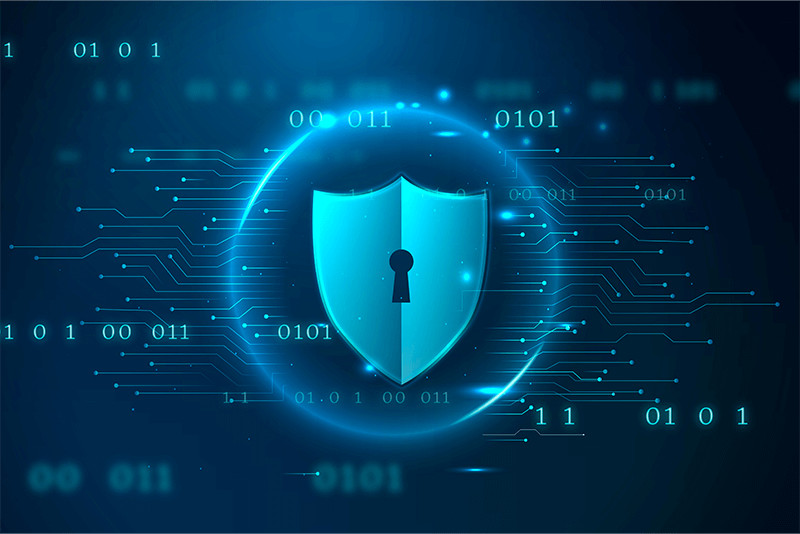
Cybersecurity threats like online scams and hackers are constantly evolving, which means you need to as well. But protecting your sensitive data to the highest degree can seem like a daunting task. And with cybercriminals finding new ways to steal information it can feel like you need to be a tech genius to go up against them. This is not the case. Read about the following simple steps anyone can take to effectively protect their data from cybersecurity threats.
Implement Password Security and Management
Passwords are the first line of defense against cybersecurity threats. But for them to be effective they need to be unique and complex. To do this, create passwords that are at least eight characters long with a mix of upper and lowercase letters, numbers, and symbols. The longer and more complex a password is the harder it is for hackers to crack. Furthermore, never use the same password across multiple websites. If one site is compromised, then all your accounts become vulnerable.
Managing numerous complex passwords can be challenging. Consider using a password manager like LastPass to store and generate secure passwords. This tool not only helps you maintain strong and unique passwords for each account, but it also simplifies the login process. Instead of having to keep track of multiple passwords for different accounts you just need to remember one master password to access all the others.
Perform Regular Updates and Patches
Keeping your devices updated with the latest patches and security releases is crucial. These updates often fix vulnerabilities that could be exploited by cybersecurity threats. To ensure your devices always have the most advanced security software, enable automatic updates. This helps to close security gaps as soon as fixes are available. Also be sure to update any third-party software regularly, as they can also be entry points for cybersecurity threats. These updates should be automated to avoid the possibility of missing one. However, you should also check to make sure the updates went through to ensure everything goes smoothly.
Install Anti-Virus and Anti-Malware Software
Active and current anti-virus and malware are vital in detecting and removing cybersecurity threats. Make sure you are using well-known and trusted security software to ensure you get the best level of protection. Set up automatic scans of your devices so you can constantly be on the lookout for malware without having to hire another person to monitor for threats 24/7. Just like your operating system, ensure your security software is regularly updated so it’s able to detect the latest threats. This way you know immediately when a cyberattack strikes and can take quick action.
Backup and Encrypt Your Data
Backing up your data ensures that you don’t lose important information in case of a cybersecurity threat or hardware failure. Aim to back up your data daily, or better yet, in real-time. Cloud storage services often provide automatic backup options, so your information is consistently being backed up to a secure location. It should be noted though that cloud services are not themselves backups, meaning they don’t guarantee that information saved through them will be retained if the server dies or another threat occurs. Because these cloud services don’t offer robust protection, you should encrypt sensitive data to make it unreadable to unauthorized users. This is especially important for mobile devices and laptops that are more prone to theft or loss.
Practice Safe Browsing
Adopting safe internet practices can prevent many common cybersecurity threats. First, avoid sketchy websites as these may host malware or phishing scams. Do this by checking the URL for unfamiliar characters and make sure it starts with “https://” instead of “http://” as the “s” indicates that the website has up to date security certificates and uses encryption to protect your data from potential hackers.
Clicking on malicious links is another way cybersecurity threats can break through your defenses. You can easily avoid these by hovering over links to see the actual URL before clicking. If the URL looks suspicious, don’t click on it. Malicious links can also be sent via emails, so be wary of messages from unknown senders and double check the sender’s address for any discrepancies.
Stay Informed and Trained
Keeping yourself and your team educated on the latest cybersecurity threats and best practices is a crucial part of keeping your practice safe. Participate in regular cybersecurity training programs to stay updated on the latest threats and how to combat them. If you don’t have an IT team able to train the rest of your business, many organizations offer online courses and webinars on cybersecurity. It’s important that everyone on your team learns strong cybersecurity measures so that your practice is protected from every angle.
Stay Secure and Stay Vigilant!
Implementing these measures might seem overwhelming, but you don’t have to stand against cybersecurity threats alone. Strategy Tech Services can help with password management, securing devices, training your team, and more. By protecting your accounts and devices you can significantly reduce the risk of falling victim to cyberattacks. Book a conversation with Strategy Tech Services today and start implementing your proactive approach to cybersecurity threats.


